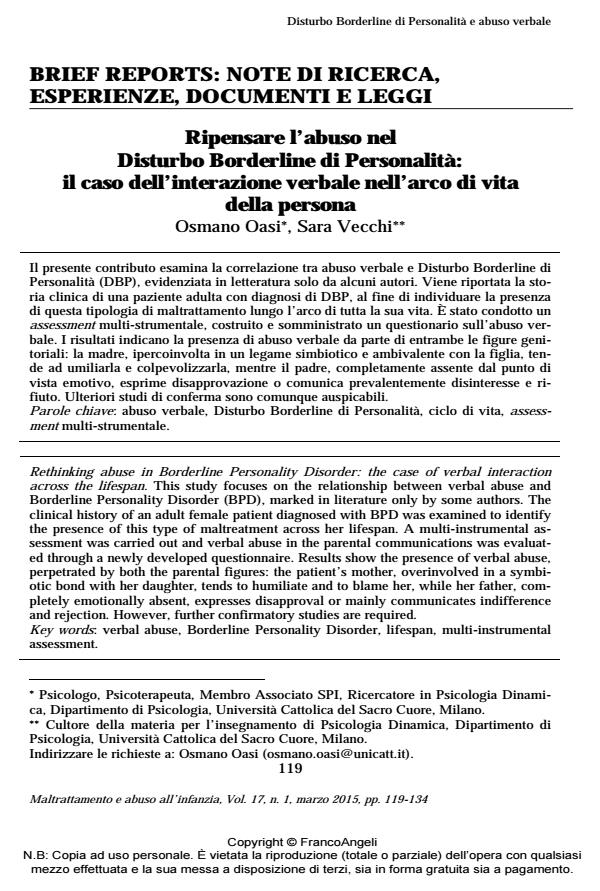Ripensare l’abuso nel Disturbo Borderline di Personalità: il caso dell’interazione verbale nell’arco di vita della persona
Titolo Rivista MALTRATTAMENTO E ABUSO ALL’INFANZIA
Autori/Curatori Osmano Oasi, Sara Vecchi
Anno di pubblicazione 2015 Fascicolo 2015/1
Lingua Italiano Numero pagine 16 P. 119-134 Dimensione file 200 KB
DOI 10.3280/MAL2015-001007
Il DOI è il codice a barre della proprietà intellettuale: per saperne di più
clicca qui
Qui sotto puoi vedere in anteprima la prima pagina di questo articolo.
Se questo articolo ti interessa, lo puoi acquistare (e scaricare in formato pdf) seguendo le facili indicazioni per acquistare il download credit. Acquista Download Credits per scaricare questo Articolo in formato PDF

FrancoAngeli è membro della Publishers International Linking Association, Inc (PILA)associazione indipendente e non profit per facilitare (attraverso i servizi tecnologici implementati da CrossRef.org) l’accesso degli studiosi ai contenuti digitali nelle pubblicazioni professionali e scientifiche
Il presente contributo esamina la correlazione tra abuso verbale e Disturbo Borderline di Personalità (DBP), evidenziata in letteratura solo da alcuni autori. Viene riportata la storia clinica di una paziente adulta con diagnosi di DBP, al fine di individuare la presenza di questa tipologia di maltrattamento lungo l’arco di tutta la sua vita. È stato condotto un assessment multi-strumentale, costruito e somministrato un questionario sull’abuso verbale. I risultati indicano la presenza di abuso verbale da parte di entrambe le figure genitoriali: la madre, ipercoinvolta in un legame simbiotico e ambivalente con la figlia, tende ad umiliarla e colpevolizzarla, mentre il padre, completamente assente dal punto di vista emotivo, esprime disapprovazione o comunica prevalentemente disinteresse e rifiuto. Ulteriori studi di conferma sono comunque auspicabili.
Parole chiave:Abuso verbale, Disturbo Borderline di Personalità, ciclo di vita, assessment multi-strumentale.
Osmano Oasi, Sara Vecchi, Ripensare l’abuso nel Disturbo Borderline di Personalità: il caso dell’interazione verbale nell’arco di vita della persona in "MALTRATTAMENTO E ABUSO ALL’INFANZIA" 1/2015, pp 119-134, DOI: 10.3280/MAL2015-001007